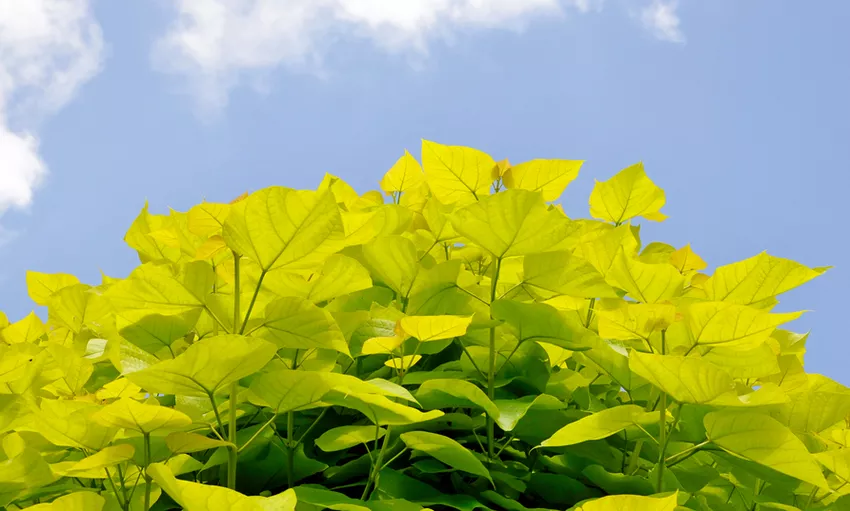The common trumpet tree (Catalpa bignonioides), a deciduous deciduous tree with strikingly large leaves, is mainly cultivated for its ornamental value in gardens and parks. In addition to the fresh green, heart-shaped leaves, the trumpet tree also produces large, funnel-shaped flowers - but not always. In the following article you can find out why it can be if your trumpet tree does not bloom.
 Drought can result in the trumpet tree not bearing flowers
Drought can result in the trumpet tree not bearing flowers
Not every trumpet tree flowers
First of all: Not every trumpet tree produces flowers. Some varieties, especially the 'Nana' ball trumpet tree, are even known not to flower at all, only very rarely and if they do, then only in old age. In general, the common trumpet tree only develops a flower very late: Before the fifth to eighth year (which corresponds to an actual age of about eight to ten years) you do not need to expect a flower decoration.
Improper care sometimes prevents flowering
In some cases, however, trumpet trees do not flower because they do not like the care. In particular, if such a flowering-unwilling tree is often under drought stress, it will gladly refuse to flower. When it comes to water, the trumpet tree is a real mimosa: On the one hand, it needs a regular water supply and, above all, even moisture - especially if it is also cultivated in a bucket - on the other hand, it does not tolerate waterlogging. You can resolve this contradiction by ensuring good drainage (e.g. by adding clay granules and sand to the substrate) and by choosing a sufficiently large pot. Water moderately but regularly - the tree must not stand dry.
Does the tree feel comfortable in its location?
Basically, the trumpet tree feels comfortable in a warm, sheltered and sunny location. On the other hand, if the tree is too shady, only a few or even no flowers will be formed. But a location that is too exposed can also lead to the failure to flower if the trumpet tree is then regularly too dry. The rule of thumb is: The sunnier and hotter a location, the more water the tree needs. Drying and / or yellowing leaves can be an indication of a lack of water.
tips
In addition, nitrogen-rich fertilization can lead to the failure of flowering, since in this case the tree puts its energy into developing roots and leaves and into growth. It is best to fertilize the lazy specimen with organic fertilizer such as mature compost. By the way: stable manure is also usually rich in growth-promoting nitrogen.